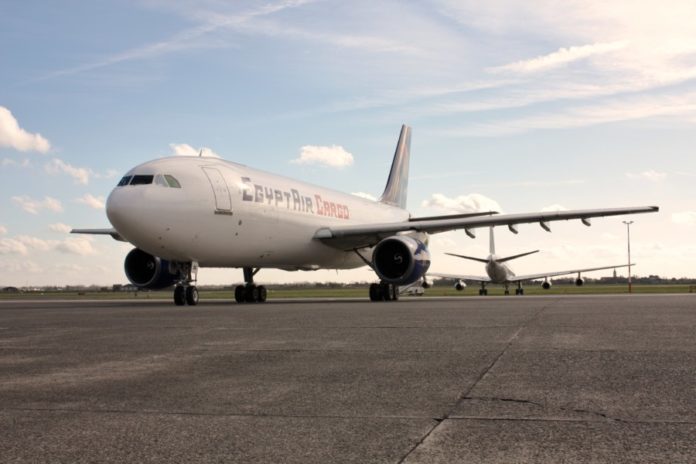

After several years of seeming hibernation, EgyptAir Cargo is easing itself back into the cargo game, with fleet renewal and growth alongside expansion of its Cairo cargo hub all translating to a 30 per cent boost its cargo capacity, writes Donald Urquhart.
Among the first crucial steps are three A330-200 P2F conversions, the first of which will be delivered in June, followed by another in October with the third and final expected in the Q2 2019, EqyptAir Cargo VP economic affairs sector, Adel Helal, told Air Cargo Week recently.
“This is the current plan, the future plan will be to increase from three to five aircraft, or more,” Helal says, adding “we are moving step by step.”
Replacement
These aircraft will replace Egyptair Cargo’s existing maindeck of two A300-600F and one A300-B4F which currently operate on services into Ostend East, Cologne-Bonn, Milan and Rome, Istanbul and some African and Middle East cities.
The added range and capacity of the A330s – 58 tonne capacity versus the 40-42 tonnes of the older aircraft – will give the carrier the ability to serve more distant and higher volume markets including the US, China, along with African destinations Johannesburg and Nairobi.
The US route will initially see New York JFK where the carrier already has traffic rights, but Helal adds other destinations could be added if “economically viable”.
Another important link will be A330F services to Shanghai and Hong Kong. The cargo side is currently supported through the bellies of the passenger side – with 60 aircraft serving nearly 72 destinations – including Bangkok, Guangzhou, Beijing and Tokyo in Asia.
“It is supporting already our airfreight movements, but China is a big market and Hong Kong is a big market so in addition to our belly capacity we are going to support it with our new freighter aircraft,” he adds.
P2F conversions
Another key step in the fleet arena will be the P2F conversions of two B737-800Fs – with a payload capacity of about 20-22 tonnes – in 2020 which will complement the longer range A330Fs by taking on a regional role.
“The A330s out of the Far East, Europe or the US will have their cargo consolidated in Cairo and we will use the narrowbody aircraft on short haul services to the regional airports either in the Middle East, Africa or in some places in Europe like Istanbul maybe,” he says.
E-commerce will definitely play a role in this, he says, particularly with the outbound cargo from the Far East. “Definitely if you’re going to be flying between the Far East – Hong Kong and China – and Europe, you’re going to be interested in the e-commerce business,” he says.
Terminal expansion
Another key development will be the upgrading and 15,500 sqm extension of its main Cairo hub. The aim, says Helal is to improve the facility’s temperature control and pharma handling capabilities along with valuable shipments, dangerous goods (DG) and general cargo.
The substantial expansion will see the storage capacity of cool chain products grow over five-fold, live animals up 100 per cent and capacity for valuable goods will see a 34 per cent growth.
The carrier currently has four cargo terminals: Two in Cairo, one in Luxor and one in Alexandria. The second Cairo terminal is dedicated solely to perishable movements, which speaks to Egypt’s position as a significant exporter of perishables to Europe, the Middle East and now also China, according to Helal.









